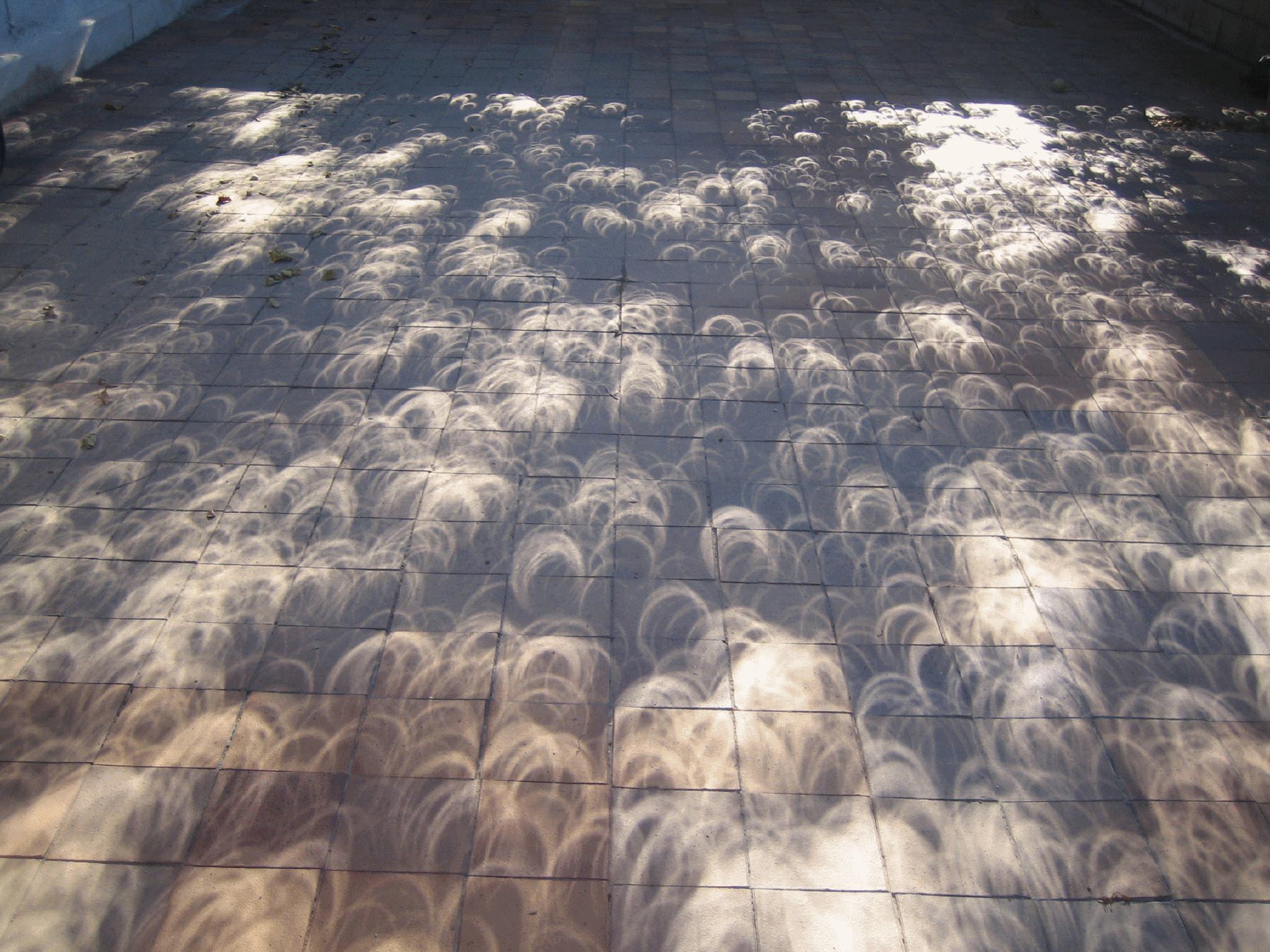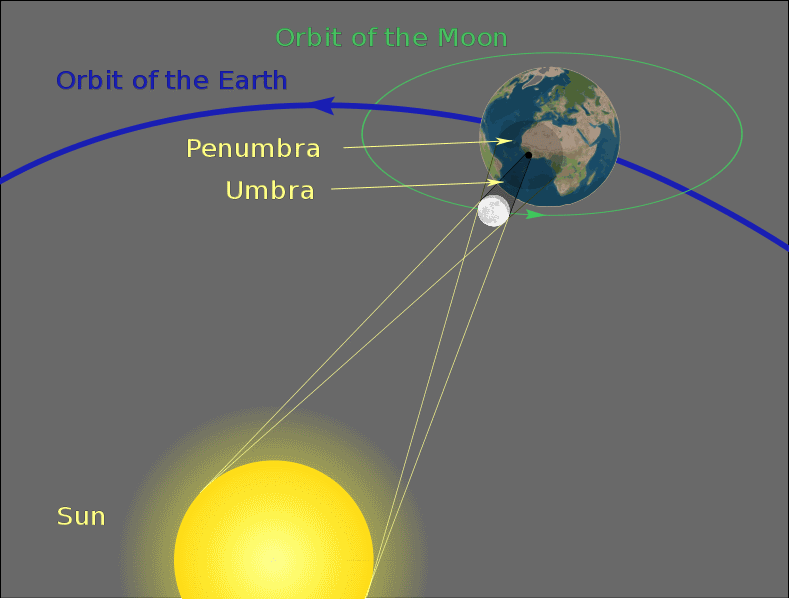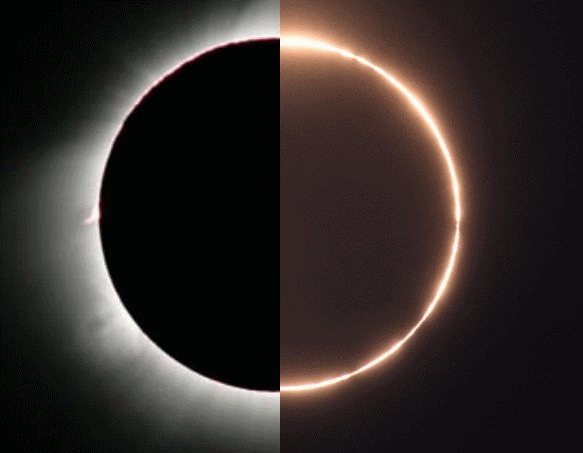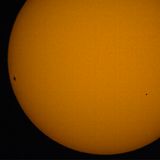
A solar eclipse is one of the most amazing astronomical events to watch from Earth. But how, exactly, do they occur?
The diameter of the Sun is about 400 times larger than the diameter of the Moon. The Moon is about 389 times closer to the Earth than the Sun. This means that the size of the Sun and Moon in the sky are about the same, and that happy coincidence is what allows us to have the greatest show on Earth: the solar eclipse.

Hybrid Solar Eclipse of November 3, 2013. By Dan Ferry of Long Island, New York. See more of his eclipse photos here.
But having the same apparent size is just the first requirement for a solar eclipse. To see a solar eclipse on Earth, the Moon must pass in front of the Sun from our vantage point.
If the orbit of the Moon were exactly in line with the orbit of the Sun, then we might expect a solar eclipse once a month. But the Moon's orbit is tilted about five degrees relative to the orbit of Earth, and this means that the Moon is often slightly above or below the Sun from our perspective when it passes between the Sun and Earth. So most months there is no solar eclipse.
For the Moon to be lined up in the right way, it has to be located near the plane of the Earth's orbit when it passes in front of the Sun, and this only happens twice a year, about six months apart. This is why there are "eclipse seasons" in Spring and Fall. At least one eclipse occurs during each eclipse season.
Not all solar eclipses are alike. As seen in the image below, since the Sun is larger than the Moon, there are regions where only part of the Sun is blocked by the Moon, and the resulting shadow is called the penumbra. For a much smaller region where the Sun is completely blocked by the Moon, the shadow is called the umbra. The type of eclipse you observe depends in part on whether you are viewing it from the umbra or penumbra.
If you are standing in the penumbra, then you will see the Moon block part of the Sun during the eclipse. This is known as a partial eclipse. Since the penumbra is much larger than the umbra, this is the most commonly observed type of eclipse.
Sometimes only the penumbra crosses the Earth, and only a partial eclipse is observed, but usually both penumbra and umbra cross the Earth. Most of us only see a partial eclipse if we are lucky, but those standing in the umbra see a very different view.
For those standing in the umbra, the Moon is directly in front of the Sun. One would therefore expect the Moon to completely block the Sun, producing what is known as a total eclipse. Often this happens, but not always. Although the Sun and Moon appear to be about the same size in the sky, their apparent sizes vary slightly. The orbit of the Earth is not perfectly circular, so sometimes it is slightly closer to the Sun, and other times slightly farther away. This means the Sun can appear slightly larger or slightly smaller. Likewise, the orbit of the Moon isn't perfectly circular, so the Moon can appear slightly larger or smaller as well.
These variations are small, so usually we don't notice them. But during an eclipse these variations matter significantly. When the Moon appears slightly larger and the Sun slightly smaller, the Moon can completely block the Sun, and viewed from the umbra it appears as a total eclipse, with only the Sun's corona visible. If the Moon is slightly smaller and the Sun is slightly larger, then the Moon can't completely block the Sun. Instead it mostly blocks the Sun except for a thin outer ring. This produces what is known as an annular (ring) eclipse.
The rarest type of eclipse is known as a hybrid eclipse. In this case the Moon is initially large enough to completely block the Sun, but as the umbra crosses the Earth the relative apparent size of the Sun and Moon shift, so that the Moon is no longer able to completely block the Sun. This means that what begins as a total eclipse changes to an annular one. The reverse is also possible, where an annular eclipse becomes a total eclipse. This means that some people can see a total eclipse, while others can see an annular one.
If you live in the United States and have never seen a total eclipse, make plans for August 21, 2017. On that day a total eclipse will cross the US from Oregon to South Carolina, making it within a day's drive of most of the country.

Shadows of an annular eclipse of October 3, 2005. By Nils van der Burg of Madrid, Spain. Via Wikimedia Commons.
CAUTION: Never look at the Sun, either directly or through a telescope or binocular, without a professionally made protective solar filter installed that completely covers the front of the instrument, or permanent eye damage could result. When using a truss tube telescope to view the Sun, both a properly fitting solar filter and light shroud are required.
Brian Koberlein is an astrophysicist and physics professor at Rochester Institute of Technology. When he's not professing, he writes about astronomy and astrophysics. He is also the author of Astrophysics Through Computation.
Brian Koberlein
Category: Astronomy
Astro-images taken through a telescope on a tracking mount provide breathtaking color and detail that you just can't see with your eyes alone. The astro-images on our web site demonstrate the imaging capabilities of the products used and are not intended to represent what you will see when you look through a telescope. Learn More
Some materials in our Resource Center require Adobe Reader. Download Adobe Reader here. Adobe Flash Player may be required to view some content. Download the Flash Player here.






















